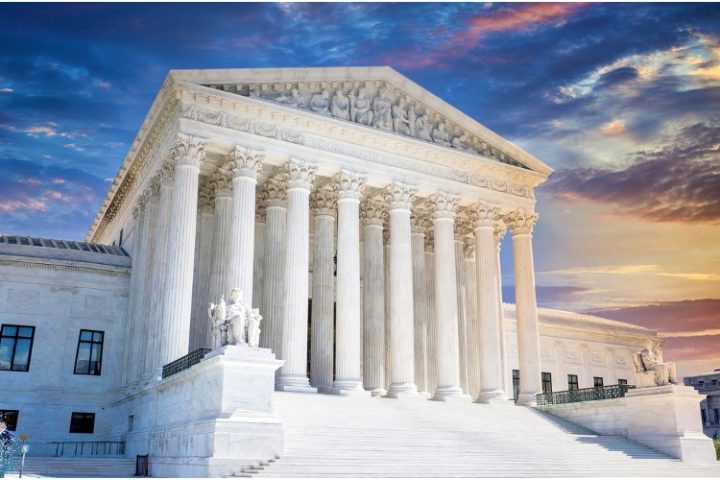
The U.S. Supreme Court (SCOTUS) on Monday heard tense arguments on the legality of race-conscious admissions policies in cases involving Harvard University and the University of North Carolina (UNC) that could bring an end to affirmative-action programs often used by many liberal colleges and universities to boost enrollment of black and Hispanic students.
The conservative majority court listened to nearly five hours of challenges to lower court rulings upholding affirmative-action policies by a group called Students for Fair Admissions (SFA), founded by Edward Blum, a 70-year-old former stockbroker and now conservative activist.
Blum’s nonprofit group has the support of 20,000 students, parents, and others who believe that racial classifications and preferences in college admissions are unfair, unnecessary, and unconstitutional. SFA’s mission is to “support and participate in litigation that will restore the original principles of our nation’s civil rights movement: A student’s race and ethnicity should not be factors that either harm or help that student to gain admission to a competitive university.”
The courts’ conservative justices leaned toward agreement with the argument voicing concern about allowing race to be considered at all in admissions decisions by colleges and universities. The liberal justices defended a limited consideration of race in admissions as one factor among many to give opportunities to deserving applicants to schools seeking to foster student diversity.
Reuters reported:
“So what is your response to the simple argument that college admissions are a zero-sum game?” conservative Justice Samuel Alito asked a lawyer representing a group of students supporting UNC’s policy. “And if you give a ‘plus’ to a person who falls within the category of under-represented minority, but not to somebody else, you’re disadvantaging the latter student?”
Conservative Justice Clarence Thomas, one of the court’s two Black justices, expressed misgivings about the principle of diversity and its educational benefits. “I’ve heard the word ‘diversity’ quite a few times and I don’t have a clue what it means,” Thomas said.
“I don’t put much stock in that because I’ve heard similar arguments in favor of segregation, too,” Thomas added.
SFA claims that UNC discriminates against white and Asian applicants and Harvard discriminates against Asian applicants. The schools disagree.
Justice Brett Kavanaugh firmly criticized the state lawyer defending UNC’s policy that the court’s precedents have held that “these racial classifications are potentially dangerous and must have a logical end point.”
Affirmative-action policies were first developed and instituted more than 50 years ago, during the administration of President John F. Kennedy, ostensibly as a strategy to combat racial bias in the United States. At that time, the main focus was to protect workers against racial discrimination in hiring and job promotion. Since then, affirmative-action policies have moved beyond the workplace to include schools, universities, and other organizations, both public and private.
A number of higher education institutions such as Harvard and UNC place a premium on achieving a “diverse” student population, not simply to remedy racial inequity and exclusion but to bring all aspects of diversity onto campuses. The schools claimed in this case that “they use race as only one factor in a host of individualized evaluations for admission without quotas — permissible under Supreme Court precedents — and that curbing its consideration would cause a significant drop in enrollment of students from under-represented groups.”
Reuters shared that these “cases give the court an opportunity to overturn its prior rulings — including one as recent as 2016 — allowing race-conscious admissions policies. They also give it a chance to embrace an interpretation favored by conservatives of the U.S. Constitution’s 14th Amendment promise of equal protection under the law that would bar governments and other institutions from using race-conscious policies — even those crafted to benefit people who have endured discrimination.”
Blum’s group has long sought to end affirmative-action policies to ensure creating a colorblind society. “An individual’s race or ethnicity should not be used to help them or harm them in their life’s endeavors,” Blum said.
Justice Ketanji Brown Jackson disagreed, saying “that given schools’ lawful ability to consider dozens of personal factors it might be unconstitutional to disallow the recognition of race among them.” Adding “a university can take into account and value all of the other background and personal characteristics of other applicants, but they can’t value race, what I’m worried about is that that seems to me to have the potential of causing more of an equal-protection problem than it’s actually solving.”
Chief Justice John Roberts stated that if “checking the box with race is taken away,” schools could pursue “race-neutral” alternatives such as letting students write essays that “indicate experiences they have had because of their race.”
The SCOTUS decision will be released by the end of June on the combined cases that were filed separately in 2014. One accused Harvard of violating Title VI of the Civil Rights Act of 1964, which bars discrimination based on race, color, or national origin under any program or activity receiving federal funding. The other accused UNC of violating the 14th Amendment.
With a conservative majority on the court, Monday’s arguments in this case appear to lean toward a decision that could radically change, if not sunset, leftist affirmative-action policies in the foreseeable future.




